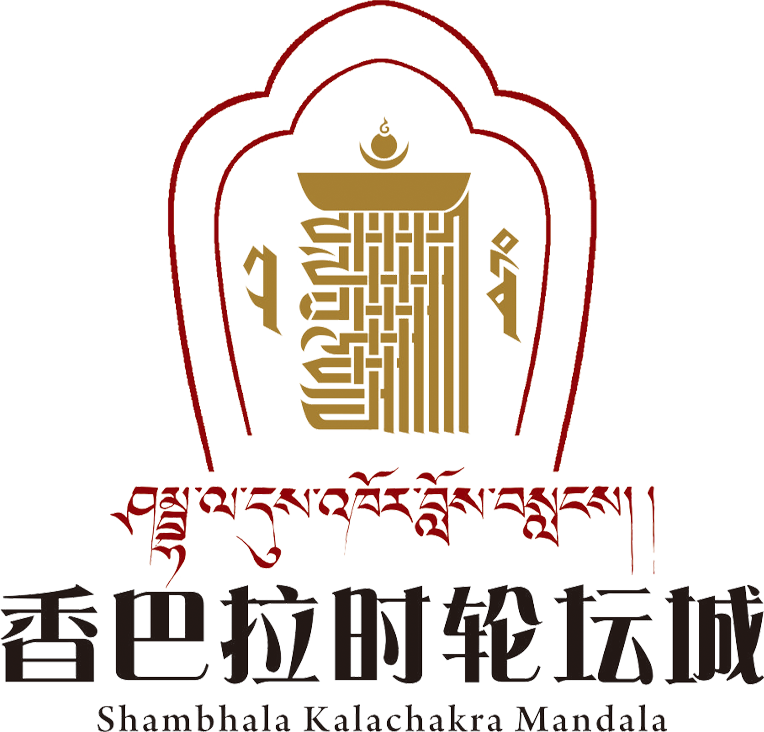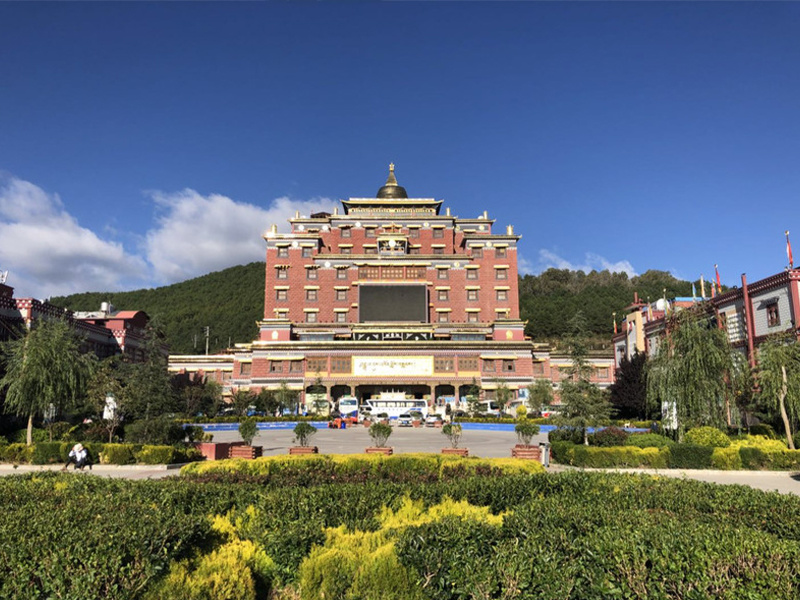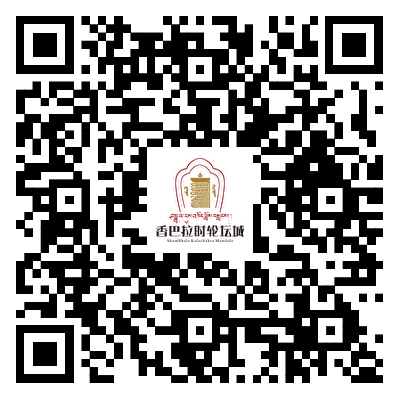Overview of scenic spots
recommend News
Scenic Area Introduction
1. 公司简介
迪庆香格里拉文化发展有限公司于2006年4月成立,注册资本5000万元。 法定代表人蔡雨杉。 公司由迪庆州旅游集团有限公司(投资4650万元,持有93%的股份)和四川甘海子雪牛文化艺术发展有限公司(投资350万元,持有7%的股份)组成。
香格里拉噶举文化博览中心由公司运营,深入学习贯彻习近平新时代中国特色社会主义思想和党的二十精神,贯彻落实习近平总书记关于加强和改进民族工作的重要思想,以铸牢中华民族共同体意识为主线,深入贯彻落实通过旅游促进各民族交往交流交融的计划,努力在迪庆新时代创建民族团结进步的示范景区。2023年12月4日,迪庆州委员会和迪庆州人民政府将其命名为“第三批民族团结进步示范单位”。2024年5月18日,迪庆藏族自治州博物馆授予香格里拉噶举文化博览中心“迪庆州博物馆香格里拉藏文化博物馆分馆”称号,共同促进藏文化和多民族文化,成为推广和宣传香格里拉文化的重要平台,以及帮助人们了解、认识和热爱各民族文化的重要窗口。并作为帮助人们了解、认识和热爱各种民族文化的重要窗口。并作为帮助人们了解、认识和热爱各种民族文化的重要窗口。
主楼共11层,高约60米。香格里拉·卡拉奇卡大殿藏品丰富,拥有众多文物,包括中国最大的室内卡拉奇卡金刚像和世界上最大的室内三维卡拉奇卡曼陀罗。截至目前,藏品约2000件,包括国家一级文物1件、二级文物14件、三级文物24件。
一楼作为接待中心和民族产品展览厅。三至九楼包含二十个展示藏族文化的展览厅。十楼是经文厅,十一楼是宝物厅。展览厅内收藏了近2000件西藏文物,1600多幅唐卡,包括81幅一级唐卡、600幅二级唐卡和627幅三级唐卡。它是一个专注于展示藏族文化的综合文化景区。
整个建筑体现了藏族文化理念的“色彩斑斓的统一与宁静的自然”,细节反映了藏族人民的人文精神“在静止中运动,在运动中寻求宁静”。建筑外观古朴庄严,整体宏伟壮观,突出了香格里拉善地的文化内涵,同时汲取了西藏各地建筑文化。室内装饰根据功能不同,风格各异,呈现出整体神秘的深度。
整体定位以美国作家詹姆斯·希尔顿笔下的“香格里拉”为原型,呈现了一个传奇的天堂——香格里拉,与现代世界相融合。通过融入和提炼 Tibetan 文化,它以高质量的文化艺术品丰富了展览内容,突出了香格里拉的主题特征,将神秘与辉煌融为一体,创造了一个值得反复参观的独特、深刻的民族文化博物馆。
该公司成立后,旨在以“生态治理、文化繁荣、产业强盛”为战略指导思想,建设社会主义和谐社会。该公司充分利用“香格里拉”品牌在发展旅游和推动地方经济发展中的影响力。公司主要致力于把握大香格里拉文化旅游圈的未来领导权,同时积极创造香格里拉文化的发展 momentum。公司致力于建设一个发展藏民族文化艺术(包括舞蹈、音乐、电影电视、服饰、食品精华)的中心、一个交流中心、一个研究中心,同时发展具有一定的国内和国际影响力的社会效益和经济效益的文化产业。
2. 公司的主要成就
1. 2014年8月,来自Shangri-La Kalachakra收藏的175幅手绘藏医药唐卡在 Shanghai被认证为吉尼斯世界纪录。这些手绘作品基于藏医经典《四部医典》的内容,描绘了生理病理树、医佛曼陀罗、诊断树、治疗树、解剖学研究、胚胎学研究、可食用药用材料等——共175幅唐卡,详细展示了藏医的深厚深度。
2. 2014年8月,收藏中的一尊纯手工制作的西藏时轮金刚杵雕像在上海被认证为吉尼斯世界纪录。这尊雕像具有四头十二臂,由纯铜表面镀金制成;它是由藏族民间手工艺人制作的,最高处20.5米,最宽处13.4米,厚度7.5米,内部约20吨,内藏约4吨经卷、金银首饰、药用材料、法器、丝绸织物及日常生活用品。
3. 2015年3月12日,在Shangri-La Kalachakra项目中的三维曼陀罗被确认为目前世界上最大规模和最精致的三维曼陀罗,创造了“最大的三维曼陀罗”的世界纪录。
4. 2015年6月21日,以1699幅唐卡为特色的展览打破了吉尼斯世界纪录;这些展出的唐卡包括西藏人类起源、香格里拉王国、西藏苯教、四部医典、藏传佛教八大流派的高僧传记、历代达赖喇嘛传记、历代班禅传记、与萨迦班智达相关的传记、与释迦牟尼佛相关的传记、所有时轮金刚曼荼罗中的神祇及各种护法神——这些唐卡制作精良,风格多样,生动地展示了西藏的文化历史和宗教信仰。
5. 2015年5月28日,第十世班禅额尔德尼·确吉杰布亲自为其命名为“香格里拉时轮金刚三维曼陀罗”,为云南迪庆赐予了一个非常吉祥的大殿。香格里拉是转世的理想王国;时轮金刚曼陀罗是其象征之一。
2020年10月9日,香格里拉卡洛查克景区成功申请为国家AAA级旅游景点。











